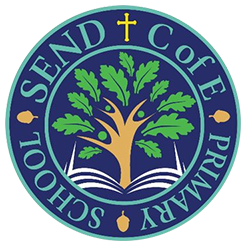Design & Technology
Why do we teach Design & Technology (DT)?
Design and Technology is a practical and valuable subject. It teaches children how to take risks and so become more resourceful, innovative, enterprising and capable. Engaging in the Design Technology process supports children in:
- being innovative and creative thinkers who have an appreciation for the product design cycle through ideation, creation, and evaluation
- developing the confidence to take risks, through drafting design concepts, modelling, and testing
- becoming reflective learners who evaluate their work and the work of others
- building an awareness of the impact of design and technology on our lives
- becoming resourceful, enterprising citizens who will have the skills to contribute to future design advancements.
What do we teach in Design & Technology?
Our Design and technology scheme enables pupils to meet the end of key stage attainment targets in the National curriculum and the aims also align with those in the National curriculum. EYFS (Reception) units provide opportunities for pupils to work towards the Development matters statements and the Early Learning Goals.
The Design & Technology National curriculum outlines the three main stages of the design process: design, make and evaluate. Each stage of the design process is underpinned by technical knowledge. Cooking and nutrition has a separate section, with a focus on specific principles, skills and techniques in food, including where food comes from, diet and seasonality.
At Send Primary School, we have chosen to use the Kapow Scheme of work to deliver the requirements of the National Curriculum. The Kapow Primary strands are:
- Design
- Make
- Evaluate
- Technical knowledge
There are six key areas that pupils revisit throughout their time in primary school:
- Cooking and nutrition
- Mechanisms/ Mechanical systems
- Structures
- Textiles
- Electrical systems (KS2 only)
- Digital world (KS2 only)
The Progression of skills document shows the skills and knowledge that are taught within each year group and how these skills develop to ensure that attainment targets are securely met by the end of each key stage. Through Kapow Primary’s Design and technology scheme, pupils respond to design briefs and scenarios that require consideration of the needs of others, developing their skills in the six key areas.
|
Year 1 |
Food – fruit and veg |
Textiles - puppets |
Mechanisms – wheels and axels |
|
Year 2 |
Mechanisms – levers and linkages to make a moving creature |
Food – balanced diet |
Structures - Baby Bear Chair |
|
Year 3 |
Mechanical systems – pneumatic toys |
Food – eating seasonally |
Structures - fortress |
|
Year 4 |
Mindfulness Timers |
Food-adapting recipes |
Static electricity |
|
Year 5 |
Stuffed toys |
Structures - Bridges |
Food - What could be healthier |
|
Year 6 |
Waistcoats – textiles |
Mechanical Systems - Automata toys |
Food - Come dine with me |
How do we teach Design & Technology?
The Kapow Primary scheme is a spiral curriculum, with key areas revisited again and again with increasing complexity, allowing pupils to revisit and build on their previous learning. At Send CE Primary School, pupils learn three DT units across each year which includes one cooking and nutrition. We believe that cooking and nutrition is an important life skill, therefore this is taught each year.
Lessons incorporate a range of teaching strategies from independent tasks, paired and group work including practical hands-on, computer-based and inventive tasks. This variety means that lessons are engaging and appeal to those with a variety of learning styles.
At the start of each unit, pupils are encouraged to recall key facts and vocabulary from previous learning.
Children are introduced to new vocabulary at the start of each unit.
